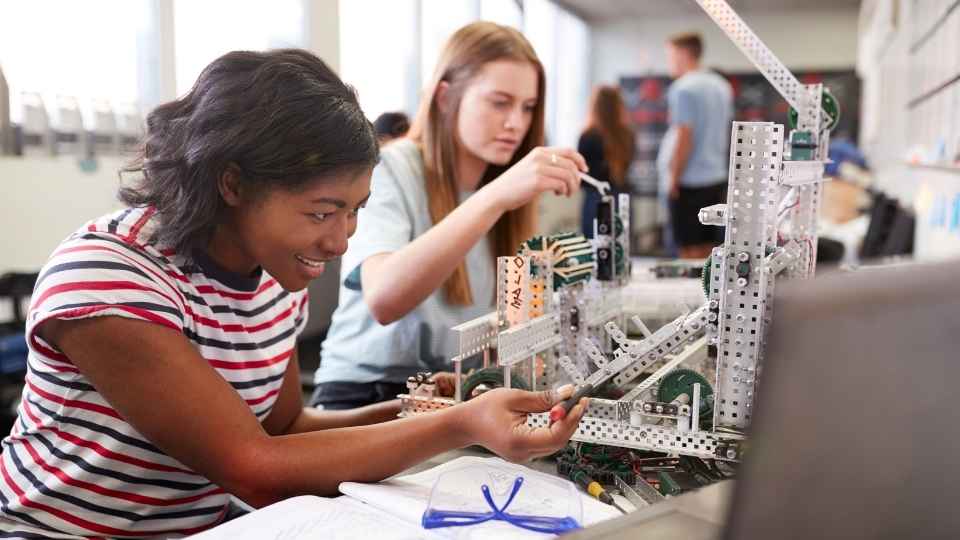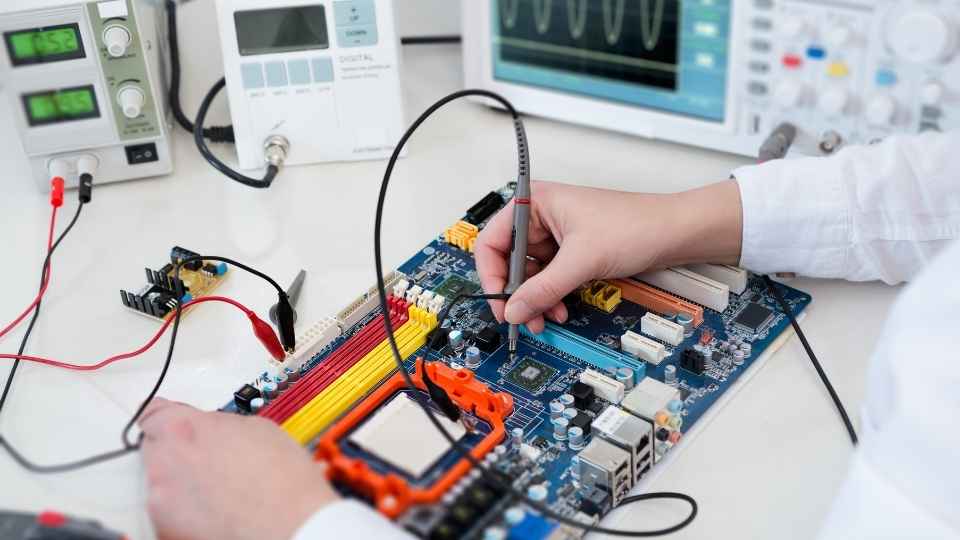
In a world where limitations of the human body have long been accepted as inevitable, a revolutionary technology has emerged that challenges these very notions.
Robotic exoskeletons, once relegated to the realm of science fiction, are now making strides in the realms of mobility and strength. With their ability to enhance human performance beyond natural capabilities, these mechanical marvels hold immense potential for transforming lives.
This article explores the question: Are robotic exoskeletons indeed the future of human mobility and strength?
Key Takeaways
- Robotic exoskeletons have evolved significantly over the years, becoming lighter and more functional due to advancements in technology.
- In therapeutic rehabilitation, robotic exoskeletons are used to assist individuals in recovering from musculoskeletal injuries or neurological conditions, improving engagement, muscle activation, and overall recovery outcomes.
- The military is increasingly utilizing robotic exoskeletons to aid injured soldiers in their rehabilitation process, providing support, stability, and enhanced mobility.
- Robotic exoskeletons have the potential to enhance human performance and strength in various fields, such as athletics, by providing support, stability, and targeted training.
History and Evolution of Robotic Exoskeletons
The history and evolution of robotic exoskeletons can be traced back to the late 1960s when the concept was first explored for military applications. The United States military initiated research on powered exoskeletons to enhance soldiers' strength and endurance. However, due to technological limitations at the time, these early prototypes were bulky, heavy, and impractical.
Over the years, advancements in materials science, robotics, and computing power have allowed for significant progress in the development of robotic exoskeletons. Today's exoskeletons are lighter, more ergonomic, and offer greater functionality. They are designed not only for military use but also for medical rehabilitation purposes.
This evolution has been fueled by collaborations between academic institutions, government agencies, and private companies. Ongoing research focuses on improving user comfort, increasing battery life, enhancing control systems for natural movement replication, and integrating advanced sensing technologies.
As a result of these developments, robotic exoskeletons hold great promise in providing individuals with limited mobility or physical disabilities greater freedom and independence in their daily lives.

Current Applications in Therapeutic Rehabilitation
One promising area of application for advanced mechanical assistance systems is in therapeutic rehabilitation, where these technologies have the potential to greatly enhance patient outcomes.
Robotic exoskeletons, with their ability to provide support and assistive movements, are being utilized in various rehabilitation settings to help individuals recover from musculoskeletal injuries or neurological conditions. These devices can be programmed to facilitate specific exercises and movements that target affected areas, allowing patients to regain strength, mobility, and independence.
The use of robotic exoskeletons in therapeutic rehabilitation offers numerous benefits, including increased engagement during therapy sessions, improved muscle activation and coordination, reduced risk of injury during exercises, and enhanced overall recovery outcomes.
As research and development continue in this field, it is expected that robotic exoskeletons will play an increasingly significant role in helping individuals regain functional abilities and improve their quality of life.
Advancements in Military Use of Robotic Exoskeletons
Advancements in the military's utilization of advanced mechanical assistance systems for rehabilitation purposes have shown promising potential to enhance soldiers' recovery outcomes and overall functional abilities.
Robotic exoskeletons, specifically designed to assist individuals with impaired mobility or strength, are being increasingly used by the military to aid injured soldiers in their rehabilitation process. These exoskeletons provide support, stability, and enhanced mobility, allowing soldiers to regain independence and improve their physical capabilities.
Through the use of robotic exoskeletons, soldiers can engage in targeted exercises that strengthen muscles and improve range of motion. Additionally, these devices offer real-time feedback and data collection capabilities, enabling healthcare professionals to monitor progress and customize treatment plans accordingly.

The integration of robotic exoskeleton technology into military rehabilitation programs holds great promise for improving the quality of life and functional outcomes for injured soldiers seeking optimal recovery.
Advancements in technology have not only revolutionized the military use of robotic exoskeletons but also opened doors to enhancing human performance and strength in various fields.
From athletes seeking an extra edge to individuals undergoing rehabilitation, exoskeletons have shown great potential. This is particularly evident in their ability to provide physical support, improve mobility, and aid in muscle training, ultimately leading to improved performance and strength for users.
Exoskeletons for Athletes
Exoskeletons designed for athletes have shown promising results in enhancing performance and reducing the risk of injuries. These wearable robotic devices provide support and assistance to athletes, allowing them to achieve greater strength, speed, and endurance. By augmenting the natural capabilities of the human body, exoskeletons enable athletes to push their limits and break barriers.
One key advantage of using exoskeletons in athletics is the reduction in injury risk. These devices can provide additional stability and support to vulnerable joints, such as knees or ankles, preventing common sports-related injuries like sprains or strains. Furthermore, exoskeletons can help correct improper movement patterns or technique flaws that may lead to chronic overuse injuries.
The use of exoskeletons also allows for targeted training and muscle activation. Athletes can customize the level of assistance provided by the exoskeleton based on their specific needs or weaknesses. For example, an athlete recovering from a leg injury can use an exoskeleton to continue training while minimizing strain on the injured limb.
Transition: While exoskeletons have proven beneficial for athletes' performance and injury prevention, they also offer significant rehabilitation benefits for individuals recovering from various medical conditions or surgeries.

Rehabilitation Benefits of Exoskeletons
The application of wearable assistive devices in rehabilitation settings has demonstrated significant potential for improving patient outcomes and accelerating the recovery process. Here are three key benefits of using wearable assistive devices in rehabilitation:
Enhanced mobility: Wearable assistive devices such as robotic exoskeletons can provide support and assistance to patients with limited mobility, helping them regain their ability to walk and perform daily activities.
Increased strength and endurance: By providing resistance or assistance during movements, these devices can help patients build strength and improve their endurance, enabling them to engage in more intense rehabilitation exercises.
Real-time feedback and monitoring: Many wearable assistive devices come equipped with sensors that can track a patient's progress, providing real-time feedback to both patients and healthcare providers. This allows for personalized adjustments to be made to the rehabilitation program, maximizing its effectiveness.
These potential benefits for patients undergoing rehabilitation highlight how wearable assistive devices can significantly contribute to their recovery journey.
Potential Benefits for the Elderly
One potential benefit for the elderly is increased stability and balance provided by robotic exoskeletons. As people age, they may experience a decline in muscle strength and balance, which can lead to falls and injuries. Robotic exoskeletons offer a solution by providing external support to assist with walking and maintaining stability. These devices use sensors and motors to detect body movements and provide the necessary assistance to enhance mobility. By wearing a robotic exoskeleton, older adults can regain their independence and freedom of movement, allowing them to carry out daily activities with reduced risk of falling or injury.
In addition to stability and balance benefits, robotic exoskeletons also have the potential to improve overall strength in the elderly population. The resistance provided by these devices during movement can help build muscle mass and strength over time. This is particularly beneficial for individuals with age-related muscle loss or conditions such as osteoporosis.

Transitioning into the subsequent section about challenges and future possibilities for robotic exoskeletons, despite their promising benefits, there are still several challenges that need to be addressed before widespread adoption of these technologies becomes a reality.
Challenges and Future Possibilities for Robotic Exoskeletons
Addressing the challenges and exploring potential advancements in assistive wearable technology can pave the way for improved accessibility and enhanced quality of life for individuals with mobility limitations. Robotic exoskeletons, a type of wearable robotic device that enhances human strength and mobility, have shown promise in this regard. However, there are still several challenges to overcome before they become widely adopted.
- Cost: Currently, robotic exoskeletons are expensive, limiting their accessibility to a wider population.
- Comfort and Fit: Exoskeletons need to be comfortable and properly fitted to ensure ease of use and prevent discomfort or injury.
- Battery Life: The limited battery life of current exoskeleton models hinders their usability for extended periods.
Despite these challenges, there are exciting possibilities on the horizon:
- Advancements in materials science could lead to lighter and more flexible exoskeletons.
- Improved battery technology may extend usage time.
- Enhanced control systems could provide more intuitive user interfaces.
Frequently Asked Questions
How Do Robotic Exoskeletons Work?
Robotic exoskeletons are wearable devices designed to enhance human mobility and strength. They work by leveraging advanced technologies such as sensors, actuators, and control systems to assist or augment the wearer's movements, allowing for improved physical capabilities and performance.
Are Robotic Exoskeletons Safe to Use?
Robotic exoskeletons hold promise for enhancing human mobility and strength, but the question of their safety remains a key concern. Extensive research and rigorous testing are necessary to ensure their effectiveness and minimize potential risks to users.
Can Anyone Use a Robotic Exoskeleton, or Are There Limitations?
There are limitations to who can use a robotic exoskeleton, as certain physical and medical conditions may prevent individuals from safely utilizing this technology. It is important to consult with healthcare professionals for personalized guidance.
What Are the Potential Long-Term Effects of Using Robotic Exoskeletons?
The potential long-term effects of using robotic exoskeletons include improved mobility, strength, and quality of life for individuals with disabilities. However, further research is needed to fully understand the physiological and psychological impacts on users.

How Much Do Robotic Exoskeletons Cost and Are They Affordable for the Average Person?
The cost of robotic exoskeletons and their affordability for the average person is a significant consideration. Understanding the financial implications is crucial in determining whether they can be accessible to a wider population.
 Basic Electronics ConceptsEssential ToolsCircuit Design BasicsMicrocontrollersDIY Electronics ProjectsRoboticsPrivacy PolicyTerms And Conditions
Basic Electronics ConceptsEssential ToolsCircuit Design BasicsMicrocontrollersDIY Electronics ProjectsRoboticsPrivacy PolicyTerms And Conditions
